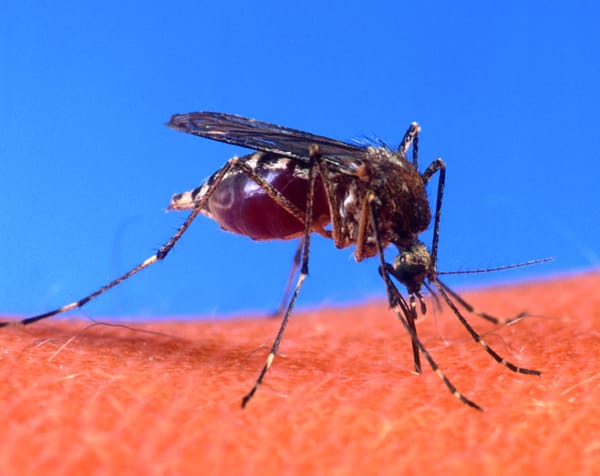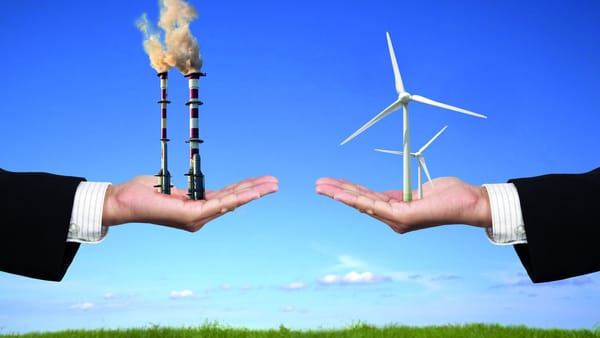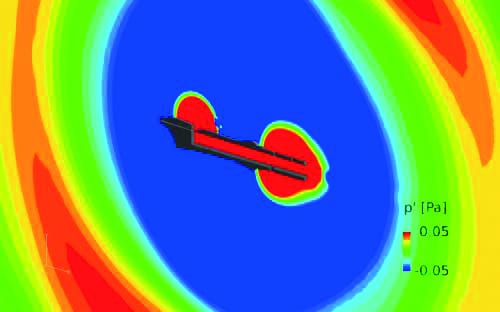Climate Change is like an unwashed dish. Don’t believe me?
Lauren Ratcliffe gets you up-to-date and busts some common myths surrounding this global conundrum

You guys already know that global warming is not a myth, nor an April fools trick. It’s a growing concern that we and future generations are facing. Earth’s blood, so to speak, is on humanity’s hands and it is our responsibility to acknowledge, understand and find solutions to this challenge. I talk about ‘humanity’, but in reality it is the actions of every individual, both you and me, which shape the course of our amalgam.
In the last 3.5 billion years, Earth has harboured the lives of 4 billion species in all their myriad forms. 99% of these species have gone extinct and one day, Homo sapiens’ time will come. What remains in question though is how will we compare to all those by-gone species. Will we fight to survive? Or will we bury our heads in the ground as we juggle our individual lives around and hope that someone else deals with it?
Popular amongst scientists and politicians, you might hear about a ‘safe operating space for humanity’. These are nine arbitrarily defined biophysical boundaries that should not be crossed in order to ensure Earth is able to sustain and provide for our persistence and wellbeing. Ones that have already been surpassed are biodiversity loss, climate change and acquisition and alteration of nitrogen and phosphorous cycles, and increasingly we are creeping up and stepping over the limit for habitat destruction and land-use change.
Climate change is undisputed but the world isn’t going to freeze overnight or be plagued with some terrifying disease, that can all be left for a Friday night in front of the TV with a bag of popcorn. What I’d like to do right now is to bust some myths and give you a low-down on some major impacts of global warming and what’s going on in the world of politics to stop it.
Climate change 101
Just so we’re on the same page. Greenhouse gases (GHGs) come in a variety of forms, creating a pretty damaging chemical cocktail. This lethal recipe includes infamous carbon dioxide, methane and nitrous oxide as well as some harder-to-pronounce chemicals: sulphur hexafluoride, hydrofluorcarbons and perflurocarbons. Their emission into the atmosphere is primarily through industrial outsources, car emissions, shipping vessels, domestic appliances and deforestation.
So how do they cause climate change? Well, about ¼ of all anthropogenic carbon dioxide has gone into the oceans where it reacts with water to form carbonic acid, which readily dissociates to create ionising hydrogen ions and bicarbonate which causes ocean acidification. On top of this, increased GHGs in the atmosphere contribute to a thickening of the greenhouse gas layer, which increases re-radiation of heat back to Earth’s surface and the lower atmosphere, increasing ocean warming and atmospheric warming. Voila.
Climate change is natural and normal. It's happened before… right?
Yep. Climate change has happened in the past, but it’s not been pretty. Also, crucially, it is the undisputed causal link between increased GHG emissions and changes in Earth’s climate as well the relative change and magnitude of change that are the issue here.
Around 11.5-13 thousand years ago, as the planet warmed after the last ice age, melt from polar ice caps caused a great ocean circulation current, the Gulf Stream, to shutdown, making European temperatures plummet 6 degrees into another ice age. The Gulf Stream is what’s responsible for west Europe’s mild climate and recently scientists have found evidence to support the theory that the melting of major ice sheets such as Greenland and West Antarctic due to global warming could make the Gulf Stream shutdown again and ironically cause another glaciation period.
Also, what’s interesting is not what’s changing but what’s staying the same. The North Atlantic Oscillation Index (NAO), a two-way pressure system that partly controls Europe’s climate, has two phases – positive and negative. The strength and position of these pressure systems usually changes from year to year. However, since 1970s, as a result of increased GHG emissions, the NAO has remained in the positive phase meaning that both the low and high-pressure systems have intensified.
This causes the sea level to rise and increases ocean warming, resulting in reduced nutrient upwelling as well as other things, depriving fish of essential food resources. These fish include species that we expect to see on supermarket shelves and in fishmonger markets. In addition, the NAO controls seasonal variation and its persistent positive phase has caused a shift towards earlier Springs and later Autumns creating phonological mismatches.
It’s also important to consider the magnitude of change. Change could have happened in the past but the rate and amplitude varies. The Southern Oscillation is another, arguably greater contributor to global climate patterns and is responsible for the periodic El Nino/La Nina climate fluctuations in the East Pacific that are characterised by a 0.5 degree increase or decrease in ocean temperature, respectively. Since the industrial revolution and increased atmospheric warming, the amplitude and frequency of El Nino cycles have increased and if we look back to the 1997/8 El Nino, which wreaked havoc for Peruvian anchovy fisheries, decimated the native wildlife on the Galápagos Islands and cost the US $20 billion dollars in damage, this is no light matter.
So it is true that climate change has happened in the past and it is a natural part of Earth’s history. However, the difference this time is that it is us that have caused these changes.
Not all scientists agree
Nope, they do. Well, the majority of them anyway. In 2013 a survey of thousands of scientific papers taking a position on climate change found 97.1% of the scientific community believed that humans were causing climate change. In addition, the latest assessment report from the Intergovernmental Panel on Climate Change (IPCC) stated “most of the observed increase in globally averaged temperatures since the mid-20th century is very likely due to the observed increase in anthropogenic greenhouse gas concentrations”.
Of course there are always sceptics out there. Just this week Senator James Inhofe, a Republican from Oklahoma and long-standing climate denier, threw a snowball in congress to prove that global warming was a myth. His facile argument was that if it’s cold enough to snow in Washington, D.C., then global warming must be a hoax. This is not just some nut off the street, he could potentially be a leading controller of environmental legislation, which is pretty terrifying. This also touches on another myth that should really be squashed flat. Temperatures can go up and down month-to-month, year-to-year, but the overall trend is upwards. It’s true, this February has been the capital’s coldest in 36 years but that holds no ground as evidence to undermine the argument that greenhouse-gas emissions are warming the planet over the course of decades.
At the end of this January a major survey of around 4,000 US citizens’ opinions on global warming revealed that only half the population agreed with the IPCC that climate change was mostly driven by human activity. Most deniers said that there was either no evidence for global warming, or that the recent warming of the Earth was due to natural climate variability. In contrast, 87% of scientists from the American Association for the Advancement of Science (AAAS) surveyed believed that the burning of fossil fuels has caused climate change. The American public’s ignorance and the gap between scientists and general society’s opinion highlight the need to promote a greater understanding and public engagement in climate change.
Small but mighty
First appearances can be deceptive. So you’ll hear a lot of statistics being flown about, such as atmospheric temperatures have increased by 0.74 degrees over the last decade. Perhaps you’ll think “so what?”. However, these seemingly insignificant changes environmental conditions can have much greater consequences for the Earth and humanity than you may initially think.
Increased emissions of strongly ionising chemicals (nitrous oxides and sulphates) cause ocean and freshwater acidification, which directly impacts biodiversity, destroying coral reefs and any calcified organisms around. A projected decrease of 0.4 units on the pH scale in the forthcoming decade may not seem much but considering that the scale is logarithmic, this translates to a 100-150% increase in acidity which is more than we have seen over the last 50 million years.
The two major ice sheets that are melting at an accelerating rate are Greenland and West Antarctic, contributing an 8 and 6 mm/year rise in sea surface levels respectively. Overall the sea level has increased 1.5m in the last decade and is predicted to further rise 0.75-2m during our lifetimes. This may also seem pretty puny but will have huge consequences for regions such as New Orleans and Miami. None of the Maldives is more than 1.8m above sea level, and according to IPCC predictions the island will be rendered uninhabitable by 2100.
So, what's being done?
Climate change is now taking more of the limelight within international political agendas. Obama wisely said “this isn’t something in the distant future, climate change is already affecting us now.” Compare that to 2002 when former president George Bush rejected participation in the Kyoto protocol and you can see we’re going in the right direction. Obama here also hits on something that is very important. Historically humanity cannot be trusted with the future tense, trading short-term gain for long-term pain. So international agreements are needed that emphasise the effect of climate change to us now, rather than in some distant future.
One of the most important international actions against climate change in recent times has been the Kyoto Protocol, which binds member states to reducing GHG emissions. This international agreement recently evolved during the Lima climate change conference back in December last year. Ever since the UN Framework Convention on Climate Change was signed in 1992, countries’ obligations have been defined according to their level of development in that year. The rich so-called ‘Annex 1’ countries have had compulsory obligations, while poorer ‘non-Annex 1’ were required to attempt voluntary efforts.
However, this division has grown ever more obsolete as developing countries such as Brazil, Russia, India and China are getting more industrialised and becoming major emitters of GHGs, so they are all now being committed to compulsory obligations. In addition, the ubiquitous limit to global warming of 2 degrees above pre-industrial level has been agreed on. It’s worth knowing that this threshold has not actually been agreed by scientific advisers but by politicians.
We’ve also seen the disinvestment movement grow from strength to strength in the last few months as environmental policy changes threaten to render fossil fuel investments worthless in the forthcoming years. One to watch out for this winter is the next United Nations Climate Change Conference; it will be interesting to see how different nations will agree to limit their greenhouse gas emissions. So watch this space.
Climate change is like an unwashed dish, left in your bedroom, pushed under a bed and forgotten about. Tackle it straight away and you’ll save yourself a lot of trouble in the long-term. Leave it and surrender to blissful ignorance and you’ll find yourself with the marigolds on, disinfectant in hand, scraping away fungal growth or throwing out the dish altogether.









